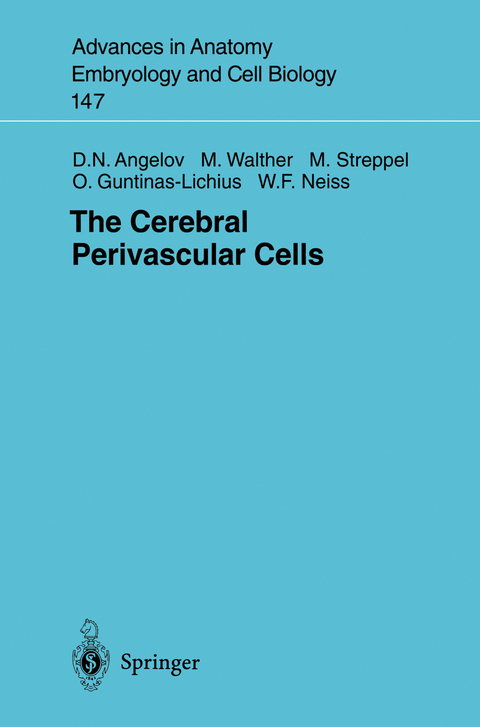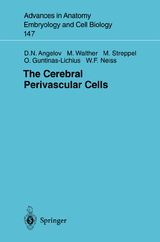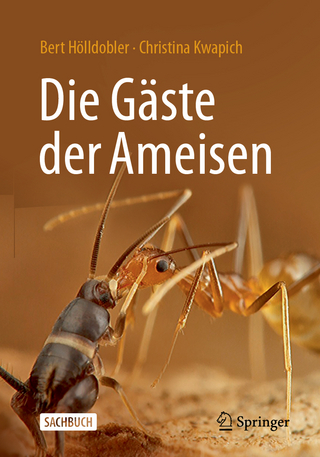The Cerebral Perivascular Cells
Springer Berlin (Verlag)
978-3-540-64638-9 (ISBN)
A main benefit of the book is the careful approach combined with modern methods of research. The result showing that the antigen-presenting cells of the rodent central nervous system are not the microglial cells but the perivascular cells is also very promising for future investigations.
Following an exhaustive literature review on the global issue of intracerebral presentation of antigen, this monograph summarizes results from voluminous work to establish which indigenous cerebral cells might present (auto)antigen to the immune system and thus initiate an (auto)immune reaction. Employing the combination of (a) a lesion model in which neuronal degeneration and neuronophagia are caused without disruption of the blood--brain barrier, (b) stable labeling of the neuronophages via phagocytosis of the permanent nontoxic fluorescent marker Fluoro-Gold from preloaded neurons, and (c) immunocytochemical identification of all FG-labeled brain neuronophages, the authors provide evidence that the only cells in the rat CNS which can be regarded as the resident antigen presenting cells of the brain are perivascular cells.
1 Introduction.- 1.1 Antigen Presentation and Antigen Presenting Cells.- 1.2 Antigen Presentation within the CNS.- 1.3 Microglia Might Be the Cerebral Antigen Presenting Cells.- 1.4 Theories on the Antigen Presentation Site.- 1.5 Questions Still Open.- 1.6 Methodological Approach.- 2 Materials and Methods.- 2.1 Animals.- 2.2 Overview of Animal Experiments.- 2.3 Surgery.- 2.4 Number of Sprouting Neurons After Retrograde Tracing with HRP.- 2.5 Number of Surviving Neurons After Resection of the Facial Nerve.- 2.6 Neuronophagic Microglia Identified by Vital Labeling with Fluoro-Gold.- 3 Results.- 3.1 Resection of 10 mm of the Facial Nerve Causes a Slow Loss of Facial Motoneurons in the Adult Rat.- 3.2 No Breakdown of the Blood - Brain Barrier or Passage of Unprimed Lymphocytes into Brain Tissue After Facial Nerve Resection.- 3.3 Fluoro-Gold Labeling of Motoneurons, Phagocytic Microglia and Perivascular Cells.- 3.4 Time Course of Existence and Migration of Fluoro-Gold-Labeled Neuronophages.- 3.5 Immunocytochemistry of the Fluoro-Gold-Labeled Neuronophages.- 4 Discussion.- 4.1 Oligodendrocytes and Astrocytes Are Not the APC of the Brain.- 4.2 Microglia Are Not the APC of the Brain.- 4.3 The Perivascular Cells Are the APC of the Brain.- 5 Summary.- References.
| Erscheint lt. Verlag | 21.9.1998 |
|---|---|
| Reihe/Serie | Advances in Anatomy, Embryology and Cell Biology |
| Zusatzinfo | XI, 90 p. 23 illus. |
| Verlagsort | Berlin |
| Sprache | englisch |
| Maße | 155 x 235 mm |
| Gewicht | 220 g |
| Themenwelt | Medizin / Pharmazie ► Studium |
| Naturwissenschaften ► Biologie ► Humanbiologie | |
| Naturwissenschaften ► Biologie ► Zellbiologie | |
| Naturwissenschaften ► Biologie ► Zoologie | |
| Schlagworte | Antigen presentation • central nervous system • Microglia • Migration • nervous system • Neuronal degeneration • neurons • perivascular cells |
| ISBN-10 | 3-540-64638-8 / 3540646388 |
| ISBN-13 | 978-3-540-64638-9 / 9783540646389 |
| Zustand | Neuware |
| Haben Sie eine Frage zum Produkt? |
aus dem Bereich




